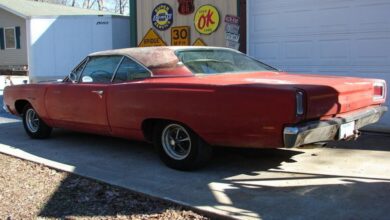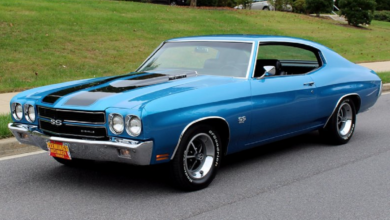How Can You Preserve Your Tires From Age-Related Rot?
First and foremost, we need to acknowledge that modern tire compounds have evolved at an incredibly fast pace. In some cases, they’ve become even more specialized, too: Modern summer-only performance tires offer a level of grip unimaginable in a street tire a few decades back, but the window in which they can be safely used has grown smaller. Both Pirelli and Michelin warn that summer-only tires may be subject to sidewall cracking in low temperatures, voiding any manufacturer’s warranty.With this in mind, the rubber compounds used in a modern tires differ from the rubber compounds used in tires years ago. What may have been good advice for a ’60s-era bias-ply, or an ’80s-era radial, may be harmful to tires today. For advice on proper tire care, we looked to Goodyear, which manufactured over 169 million tires (of all types) in 2021.Per the Akron, Ohio-based manufacturer, sidewall and tread weathering, often referred to as dry rot, is a result of the breakdown of compounds used to make the tire. Though a natural age-related process, several things can accelerate this, including UV exposure, environmental extremes (particularly a hot, dry climate), high ozone levels, underinflation, and lack of use. Tires benefit from regular exercise, and don’t like to remain stationary for extended lengths of time.
According to South Bend, Indiana, (and online) vendor the Tire Rack, “The repeated stretching of the rubber compound actually helps deter cracks from forming.”To care for tires, Goodyear recommends cleaning them regularly with water and a mild dish soap, followed by a rinse with clean water. The manufacturer cautions against the use of some tire dressings, specifically those that contain petroleum distillates. While these products may temporarily enhance a tire’s appearance, in the long run petroleum products can prematurely age a tire. The Tire Rack backs this up, advising that excessive use of tire cleaners and dressings can remove anti-oxidants and ozone protectants from the tire’s rubber compounds.Silicone grease is often used to lubricate and swell rubber seals, but an o-ring is not the same thing as a tire. We’ve seen anecdotal reports of silicone sprays adding tire shine (and restoring color), too, but if the tire manufacturer doesn’t specifically recommend it, there’s probably a reason (and it’s not just to sell more tires).Instead, to maximize tire life and reduce dry rotting, we suggest you check the tires regularly for proper inflation, and cover any tires that may have direct exposure to sunlight (even through a window). If the vehicle in question is parked for an extended period, consider putting it on jack stands to take the weight off the tires, or at the very least repositioning it every month or so. Avoid parking near equipment that potentially generates ozone, such as generators or welders, and prevent temperature extremes if at all possible. Wash the tires as Goodyear suggests, and if you really want to use a product on the tires, opt for a water-based dressing that doesn’t contain petroleum distillates.Finally, keep in mind that tires can also age from the inside out. Even if a tire appears to be in good condition externally, there’s no way to know if an older tire is safe to use. We tend to follow the 10-year rule, since a set of tires is a lot cheaper than the potential outcome of a tire failure, particularly one at speed.





